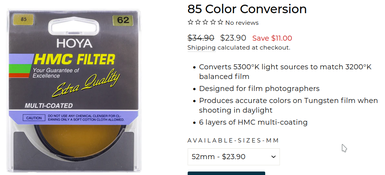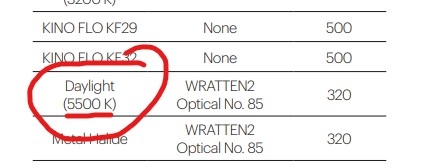Quick update as the thread is active again.
I've ordered more of the Candido 800 film as it's just sooo good for gigs, and being regular C41 process I can hand it into the lab around the corner.
I have shot one of the "Poly Film Lab" films and had it processed, absolutely nothing wrong but being ECN2 the processing cost more and my local lab can't do it. But the film itself did exactly what I wanted. I've also had some B&W cine film processed by Poly Film Lab....took quite a while but their hand processing was fairly consistent, probably better than my own and half the price of machine processing with other labs. They told me that they're two or three volunteers working at the lab on weekends so turnaround can be an issue when they've received a lot of films for processing. But they did it, and I'm happy with the products and services of both them and Candido.
Hey All, just replying here as a way of an update for anyone finding this thread.
We have had a crazy few years with ups and downs both in terms of resourcing, turn around time, equipment reliability, multiple premises moves (4!!!!) and all that when running the lab part time.
Our problems have been exacerbated recently by no other lab we know of in the UK now offering BW Reversal processing of Photo or Cine films and this has led to being inundated with orders for this, and whilst appreciated these take an age to process - 45min per batch of up to 5 rolls (photo) and an hour for Cine films.
Lots of posted feedback has been negative and rightly so in those instances particulalry around turn around times, it's been one rough ride.
We started the lab before ECN2 really took off because we did ECN2 for our own Super8 films - we wanted to provide something others didn't or at a price that was more affordable. That's how we got into BW Reversal too because we also did that ourselves and had requests etc etc.
I say this because I want people to know that we make no money at all at the moment - in fact it costs us considerably to keep the lab going both in money, time and effort. We do it because of a sense of trying to offer alternatives to people - albeit not the most polished - but have had some rough feedback mainly because people order from us expecting a Take It Easy or Analog Wonderland type turnaround. We aren't a traditional commercial lab and have never tried to be. We could be, we have the c41 processors and the lab scanners but then we would just be like the rest who already do a good job - so we don't see the point in that. The key takeaway i hope anyone reading this has is expectation management.
We are re evaluating whether to keep the lab service runninflg now with all the negative feedback recently, as well as the ongoing challenges in running a niche film service and wondering whether what we offer is worth it for the community anymore. Not looking for sympathy just a genuine statement as film supplies have recovered, kodak are moving to no remjet ECN2 making it very easy now for people to home develop this in C41 chems etc and BW Reversal has and always will be a niche. John Salim does fantastic Oscar nominated worthy E6 so there may not be a need for us anymore.
Thet said, on the retail front we still think we offer good value. We are very open about our expired films mainly the superia surveillance / industrial films- they are very well stored and whilst some are rated at 90ft we've measured them at around 100ft (they have a little excess like Kodak does). We still aim to provide re spooled Ektachrome - it is always bought fresh - our turnover of the film stock is 1-3 months and it's always immediately cut and then frozen and thawed on order. We will see how long we can keep that going.
We are focussing more and more on workshops and actually helping filmmakers like us which was always the original intent before we went down the full Photo Lab route. Anyways that's it by way of an update.
Also AGulliver I did see another post in the Cine group about Bellini BW Reversal kit but can't reply there. The kit is great on the basis you know what you are doing with it. It doesn't use a hardener, at least not in our view so the emulsion is very soft post processing and lots of times comes off in 2nd dev. We started out with this kit but quickly migrated to the Ilford method using a permangenate bleach. It has good shelf life provided you mix the bleach parts separately for storage and only combine when needed. Using argon gas (wine preserver) works wonders on the PQ Universal and Perm. Bleach for longevity.
Also we have stress tested the Ilford method on R100, TriX, Adox and Rollei and miraculously we get very similar results on our own sensitometrically exposed film strip tests based on the manufacturer data sheet recommendations which is excellent e.g. trix 90sec dev, R100 10-11min, Adox 10min-11min etc etc
Anyways, hope this insight is helpful for anyone coming across it!
Cheers, Nick
Poly Film Labs




